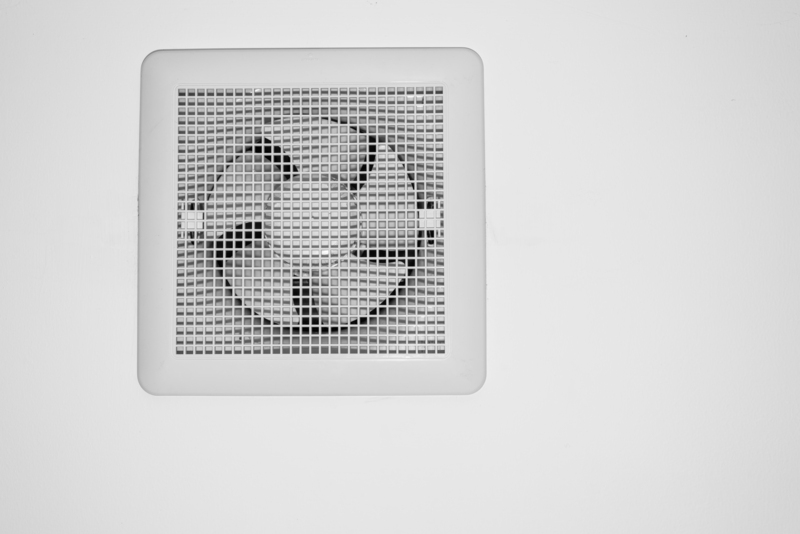Optimizing air: Key to productivity and health in indoor environments
Posted on 23/08/2025
Optimizing Air: Key to Productivity and Health in Indoor Environments
In today's modern world, indoor environments--from offices to homes to schools--play a pivotal role in our daily lives. The quality of the air we breathe within these spaces profoundly impacts our productivity, well-being, and overall health. Optimizing air quality isn't merely a luxury or an afterthought--it's an urgent necessity. This comprehensive article delves into the critical importance of indoor air optimization, explores actionable strategies, and highlights the transformative benefits for individuals and organizations alike.
Understanding the Importance of Indoor Air Quality (IAQ)
Indoor air quality (IAQ) refers to the air quality within and around buildings and structures, especially as it relates to the health and comfort of occupants. According to the Environmental Protection Agency (EPA), Americans, on average, spend approximately 90% of their time indoors, making the quest for cleaner, fresher air more critical than ever.
Why Does Indoor Air Quality Matter?
- Productivity: Numerous studies indicate that poor air quality can lead to lethargy, reduced focus, and cognitive impairments, directly lowering productivity.
- Health: Exposure to indoor air pollutants is linked to a wide range of health issues, from headaches and eye irritation to more severe conditions like asthma, allergies, and cardiovascular diseases.
- Mental Well-being: Clean air supports better mood, reduces stress, and encourages mental clarity.
- Energy Efficiency: Optimized ventilation systems can reduce the burden on HVAC systems, saving energy and lowering costs.

Common Indoor Air Pollutants Undermining Health and Productivity
Optimizing indoor air involves first identifying the typical pollutants present in enclosed spaces. Common contaminants include:
- Volatile Organic Compounds (VOCs): Emitted from paints, cleaning agents, building materials, and furnishings, VOCs can trigger respiratory issues and headaches.
- Particulate Matter (PM2.5 & PM10): Tiny airborne particles from dust, smoke, and outdoor pollution can penetrate deep into the lungs, causing or exacerbating health problems.
- Carbon Dioxide (CO2): Elevated CO2 from human respiration in poorly ventilated spaces can reduce cognitive performance and increase drowsiness.
- Bacteria, Viruses, and Mold: Microbial contaminants can cause infections and worsen allergies.
- Allergens: Pet dander, dust mites, and pollen increase the risk of allergic reactions.
- Radon: A naturally-occurring radioactive gas that may seep into structures, increasing the long-term risk of lung cancer.
The Science: How Air Optimization Boosts Productivity
Link Between Clean Air and Cognitive Performance
Multiple studies, including work by Harvard's TH Chan School of Public Health, have directly linked indoor air optimization to improved cognitive function and productivity. When people work in environments with low VOCs and adequate ventilation, their decision-making abilities, concentration, and memory improve significantly.
- For every 400 ppm (parts per million) increase in indoor CO2 levels above typical outdoor levels, some studies report a 15-20% reduction in cognitive test scores.
- Exposure to high PM2.5 leads to increased absenteeism in workplaces and schools.
- Improved ventilation is associated with higher reported workplace satisfaction and reduced sick days.
Health and Well-being
Clean, optimized air does not just help with day-to-day comfort--it reduces the risk of respiratory and cardiovascular diseases. For sensitive populations, such as children, the elderly, or those with pre-existing health conditions, improving indoor air can be lifesaving.
Optimizing Air Quality: Actionable Strategies
Optimizing air in indoor environments requires a multifaceted approach. Below are actionable steps individuals, employers, facility managers, and homeowners can implement:
1. Ventilation Improvement
- Increase Fresh Air Intake: Open windows when weather allows, use trickle vents, or install additional vents to bring in outdoor air.
- Mechanical Ventilation: Employ energy recovery ventilators (ERVs) or heat recovery ventilators (HRVs) to ensure continuous air change without excessive heat loss or gain.
- Optimize HVAC: Regularly maintain and tune HVAC systems to ensure optimal operation and efficient filtration.
2. Air Filtration and Purification
- HEPA Filters: Install high-efficiency particulate air (HEPA) filters in HVAC systems to trap over 99.97% of airborne particulates.
- Portable Purifiers: Use portable air purifiers with HEPA and activated carbon filters for rooms with high occupancy or sensitivity.
- UV-C Technology: Some advanced systems incorporate ultraviolet (UV-C) light to neutralize bacteria, viruses, and mold spores.
3. Source Control and Pollutant Reduction
- Low-VOC Products: Choose low- or zero-VOC paints, sealants, and furnishings.
- Regular Cleaning: Implement routine dusting, vacuuming with HEPA filters, and cleaning to reduce particulate and allergen buildup.
- No Smoking Indoors: Enforce no-smoking policies to eliminate dangerous toxins.
- Monitor Humidity: Keep indoor humidity between 30-50% to deter mold and dust mites while maintaining comfort.
4. Air Monitoring and Real-Time Data
- IAQ Monitors: Install indoor air quality monitors to track VOCs, CO2, PM2.5, humidity, temperature, and more in real time.
- Data-Driven Adjustments: Use collected data to adjust ventilation, activate purifiers, or troubleshoot emerging issues.
5. Biophilic Design and Greenery
- Indoor Plants: Certain houseplants can help reduce VOCs and create a calming, fresh atmosphere.
- Natural Materials: Opt for furnishings and finishes that are less likely to off-gas harmful chemicals.
Optimizing Air in the Workplace: A Competitive Advantage
In today's competitive business environment, companies are increasingly recognizing that employee well-being directly influences performance, retention, and innovation. Optimizing air quality and ventilation in office spaces translates into:
- Fewer Employee Sick Days: Reducing the spread of viruses and allergens keeps teams healthier and present.
- Enhanced Focus & Creativity: Clean air helps prevent mental fatigue and promotes clearer thinking.
- Talent Attraction and Retention: Progressive organizations that invest in optimized, healthy workspaces attract top-tier talent.
- Better Corporate Reputation: Responsive environmental policies signal corporate responsibility to clients, partners, and potential hires.
Case Study: Office Air Quality Innovation
A leading technology firm implemented smart air sensors and upgraded to MERV-13 air filters throughout their corporate headquarters. Within six months, they reported:
- 29% reduction in employee-reported headaches and allergies
- 15% boost in project completion rates
- Significant improvement in overall workplace satisfaction metrics
Optimizing Home Air Quality: Safeguarding Families
Our homes should be sanctuaries of safety and comfort, yet many homes unknowingly harbor indoor air pollution sources. Renovations, cleaning products, cooking, grooming, and even everyday use of electronics can contribute to indoor air challenges.
- Use Exhaust Fans: Install and use exhaust fans in bathrooms and kitchens to remove moisture, smoke, and odors.
- Avoid Synthetic Fragrances: Choose unscented or naturally scented cleaning and personal care products.
- Address Radon: Test for and mitigate radon, especially in basements and ground floors.
- Promote Airflow: Arrange furniture to allow air circulation and never block vents.
Child Health Benefits
Children's developing lungs and immune systems are highly sensitive to air pollutants. By optimizing air at home, parents can help prevent asthma, allergies, and developmental issues.
"The air children breathe directly influences their growth, learning, and lifelong health outcomes." - Pediatric Environmental Health Specialist
Innovative Technologies Transforming Air Optimization
With advancing technology, new solutions have emerged to continuously monitor, purify, and optimize indoor air:
- IoT Air Quality Systems: Smart sensors connect to building management systems, automating ventilation and purification based on real-time data.
- Hybrid Filtration: Next-generation filters combine mechanical, electrostatic, and chemical techniques for superior contaminant removal.
- Adjustable UV-C Devices: Modern UV-C sterilization can be deployed safely in both occupied and unoccupied spaces to fight pathogens.
- Green Roofs and Living Walls: Biophilic design extends air-purifying benefits to entire buildings, improving both aesthetics and health.
Frequently Asked Questions: Optimizing Air Indoors
- Are indoor air quality monitors worth the investment?
Absolutely. They provide crucial data for proactive adjustments and peace of mind for building occupants. - How often should air filters be replaced?
For most residential HVAC systems, filters should be checked monthly and replaced at least every 2-3 months--or more frequently in high-use or polluted environments. - Can houseplants really improve air quality?
While plants can remove some VOCs, their impact is modest. Use them as a supplementary method alongside core filtration and ventilation strategies. - Which pollutant poses the greatest health risk?
It depends on individual sensitivity and source prevalence, but PM2.5 and certain VOCs, as well as radon in specific regions, are the most concerning.
Conclusion: Optimizing Air Is Essential for Healthy Productivity
In an era when indoor environments dominate our daily lives, the imperative to optimize air quality cannot be overstated. From home offices to corporate boardrooms to classrooms, breathing clean, optimized air powers our productivity, fortifies our health, and uplifts our spirits.
Organizations and homeowners who prioritize air optimization create spaces where everyone can thrive. By embracing effective ventilation, advanced filtration, smart technology, and pollutant source reduction, we create not just better air--but a better quality of life for all.
Prioritize air quality today and unlock the full potential of tomorrow.

Quick Tips for Healthier Indoor Air
- Ventilate daily: Open windows or use fans whenever possible.
- Regular maintenance: Service HVAC and air conditioning systems according to manufacturer's recommendations.
- Monitor humidity: Keep between 30-50%.
- Avoid unnecessary chemical use: Choose natural, unscented products.
- Upgrade filtration: Invest in HEPA-quality filters or purifiers.
- Educate and involve everyone: Building-wide awareness ensures sustained improvements.
References
- Environmental Protection Agency. Indoor Air Quality (IAQ).
- Harvard T.H. Chan School of Public Health. Research on workplace air quality and cognitive function.
- World Health Organization. Air Pollution: Health impacts and recommendations.
- Centers for Disease Control and Prevention. NIOSH Topic: Indoor Environmental Quality.
Optimizing air is not just about what we breathe, but how we live and work. Make it a priority, and reap the benefits for your mind, body, and productivity.




